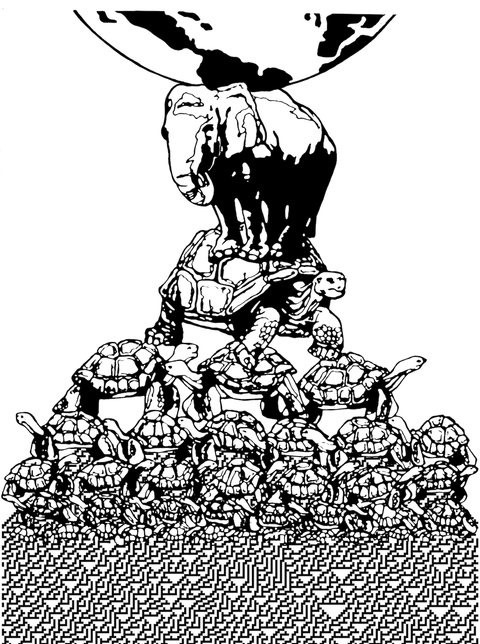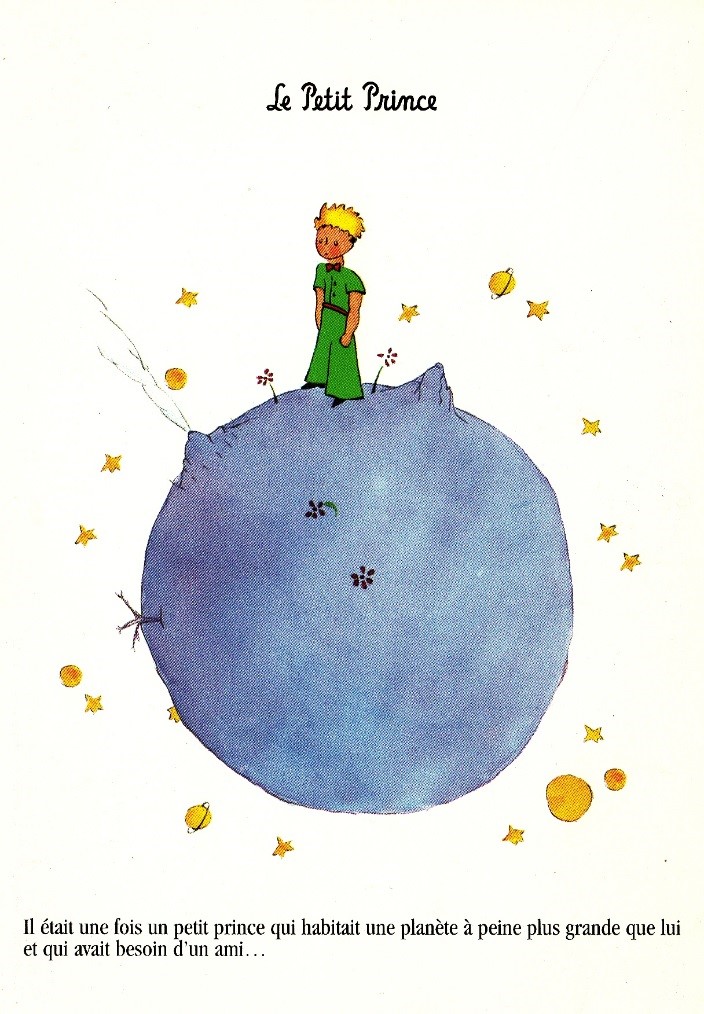A lot of people suffer from misconceptions. Unfortunately. They have incorrect believes, they suffer the consequences of mistakes, waste time following paths in live that are unnecessary or follow other people who are not telling the truth. However, not you! How do you know for yourself your believe is true or not?
If somebody tells you something important that you need to react to, are they telling the truth?
I tend to follow a method to get closer to the truth. It is described in this article. I believe it is an easy way to get rid of a lot of false ideas. The main skill is to use falsification. The whole method is described in the last paragraph.
I will start with a false idea to get the picture. With the turtle example as a lead, I will go through the method. It is a scientific method, really.
Turtles all the way down!

The false idea in this example comes from a famous story about a guru:
A guru affirms that the earth is supported on the back of an elephant; and when asked what supports the elephant he says it is a giant turtle. When asked, finally, what supports the giant turtle, he is briefly taken aback, but quickly replies “Ah, after that it is turtles all the way down.”

Ah, but what is supporting the last turtle? Or is there a last turtle? If you think about it, there cannot be a last turtle: there always has to be one below the current one
But can there be infinite turtles? Well, probably not: they would also have infinite mass, size, gravity, need infinite space etc. If it was infinite in size, the space containing it would have to be even infiniter in size, otherwise it would fill the whole space, which it does not. And also, who would be holding the stack of infinite turtles?
There cannot be both infinite turtles and also a finite number of turtles at the same time. This then is a contradiction derived from the theory. The theory cannot be true.
Ah, but if the theory is not true, what other theory could explain that earth itself is not falling down?
The reality
If we assume, for now, that there is a reality, our theory should describe that reality as closely as possible. That is what we want from a theory. I will call this the ‘truth’ from now on.
Once we have a theory that describes reality well, we can use it for all sorts of purposes: we can use it to make things that make us happier, for example. Even incomplete theories or theories where we know they contain errors can be useful.
So, what does reality look like with regards to the question the guru had earlier? Why does the earth not fall down? What does support the earth in the end? How would you find out what supports the earth?
One easy answer is: just walk around the earth to find out it is a ball! You will then realize gravity pulls you towards the center and there is no need for turtles at all. Actually, with this new theory (earth is a ball floating in space), the question becomes nonsensical: there is no need to support earth at all…

However, there is a problem with this easy answer. In reality, earth is quite large. Looking out of the window of the temple, the guru might not realize the field outside is a curved part of a ball. Also, in his world-view he might actually fall of the edge of the earth when he reaches the end, maybe even hitting a turtle on the way down…

The facts
Facts are what we know about reality. A fact matches reality and we call it true. A ‘false fact’ is generally useless. Note that a fact of the type ‘the earth is not supported by an elephant’ is true!
I know there is a long discussion possible about how you know something is true and what other truths it relies on etc. In the end, the only thing you can be sure of appears to be ‘I think therefore I am’. In what shape or form ‘you are’ is even debatable… I will skip this discussion for now.
So let’s say that for you and me, facts are our strong believes. We are pretty sure our facts match reality.
The guru knows everything he drops falls down. His entire life, this has happened without exception and he strongly believes this will be the case in future with all objects too (fact). He considers the earth an object, so it must fall down as well (theory).
So why does it not? It may be supported by turtles… (theory)
The experiment
The guru has a certain theory that he thinks describes reality best. He thinks the world may be supported by turtles and hence it does not fall down. If he assumes his reality is true, what can he do to check the theory?
Well, what he could do is for example:
- go to the edge of the earth
- peek over the edge
- see how many elephants & turtles are there to support the earth
He will then have more information and a confirmation of his theory: Good plan!
Maybe he can even make his theory more detailed with the new information he will be gaining.
The guru thus starts on his pilgrimage to the end of the earth. To his astonishment (and after a very long time) the guru will find himself back at his own temple. He has walked around the entire earth and now realizes that there is no edge.
This should give him a very strong clue that the earth is a ball and has some sort of an attractive pull (gravity).
He has new facts and can think of a new theory that supports the new facts. The new theory will be closer to the truth.
The theory
A theory should describe the truth as closely as possible. This means it should not be in contradiction with any known, believed facts. If it is in contradiction with a fact, the theory is false and needs (creative) adapting.
Sometimes it is useful to generate more facts or check the truth of existing facts (by experimenting!) to adapt a theory.

If a theory covers all know facts well, we can maybe also improve on the theory by generating more facts.
Falsification
Walking around the earth takes a long time and is not a realistic option for the guru. The guru might set of, encounter water, build a boat, continue the journey etc. He will likely give up before he reaches the starting point. If he misses the starting point (very likely!) he will continue his journey for a very long time, circling the earth, not encountering the same spot for a VERY long time. This is an inefficient experiment.
To design an experiment that is efficient there are a few tricks he can use. One of them is falsification. Falsification is experimenting to find facts that disprove (falsify) the theory. This does not come naturally to most people in daily life! Most people try to prove their theories by finding facts to support it.
If a fact is in accordance with the theory, does this prove the theory?
Unfortunately, it does not. If a fact is in accordance with the theory, it generally means your theory may not be wrong. The fact can support a theory, or, in other words, lend it more credibility. It may make the argument in favor of the theory stronger.
But it does not prove the theory is right!
If, on the other hand, only one fact is in contradiction with the theory, the theory is definitely false: if according to theory something should be the case and in fact it is not, the theory is wrong. The theory has been falsified.
For example: the guru trying to reach the end of the world finds that there is no end. He has seen the other side of the world and finds, in fact, that there are no turtles. He now knows his theory is not correct. He must come up with a new theory, one that matches all the facts, including the new ones.
But, because his theory already contained a contradiction in the known facts before he set of, he could have known that the theory was wrong. He did not have to go to the end of the earth to find this out.
It may have been difficult for him to come up with another theory that did match the facts. Some creativity was necessary at that point. Coming up with a new theory where the earth is a ball (closer to the truth) would have required a lot of imagination… (The ancient greeks already devised an experiment with long sticks standing straight, very far from each other and compared shadows at the same time to show that the earth is not flat. Plato wrote: ‘the earth is a round body in the center of the heavens, and therefore has no need of air or of any similar force to be a support’.)
Using his theory as a starting point to generate new facts and thus be able to update the theory was maybe not a bad approach. Now, satellite pictures confirm the earth is round.
Any new fact will be in alignment with reality, so eventually the theory should match reality pretty closely.
The method
If we put it all together, the method of improving your theory is simple:
- Make sure your basis facts are right, check them as much as possible.
- Think of a theory (you can be creative, esoteric, there are no rules!)
- Experiment to generate new facts
- The fastest way to find out where your theory is wrong is often by trying to find facts that do NOT match your theory!
- Adapt the theory
- Experiment
- Adapt the theory
- Experiment
- Adapt the theory
- Experiment
- Adapt the theory
- …etc.
For example:
Somebody tells you a story (the theory) about a fight they had with a friend. You could call the friend (experiment) to check and generate some new facts. In the conversation, you try to find facts that do not match the story. If you find them, you need to adapt the theory to more closely reflect reality.